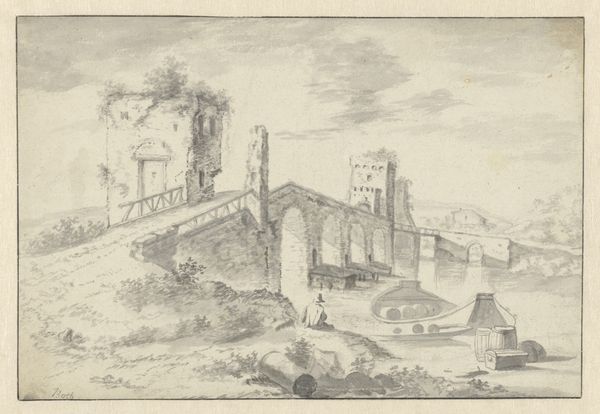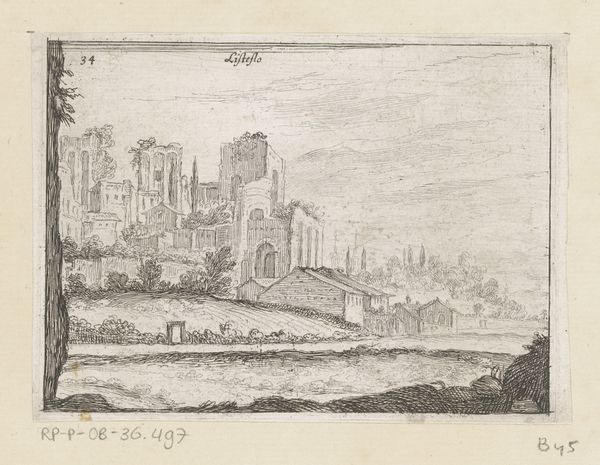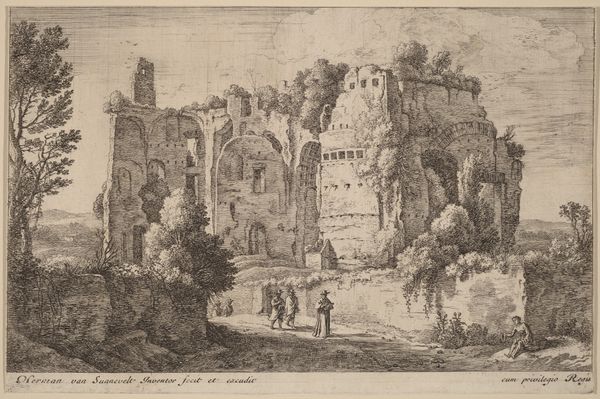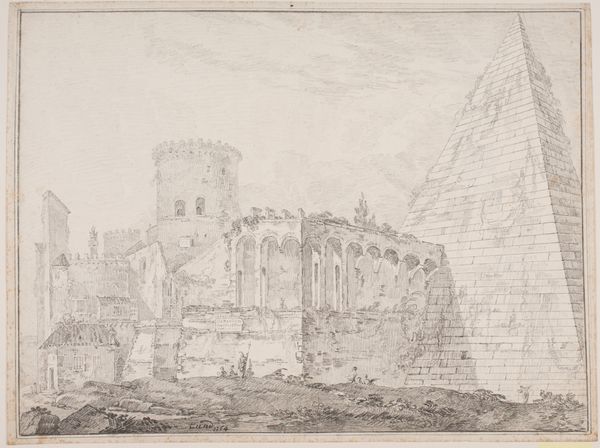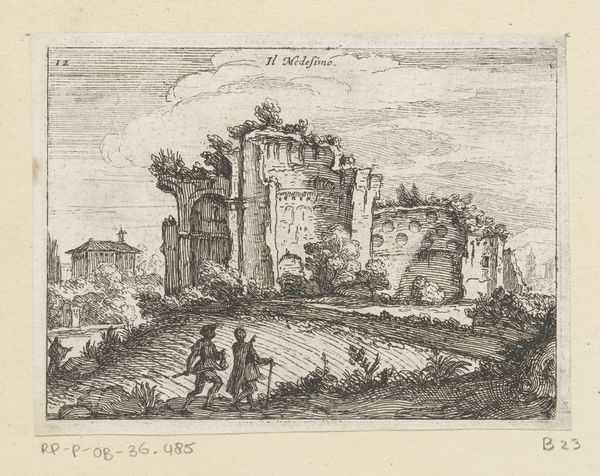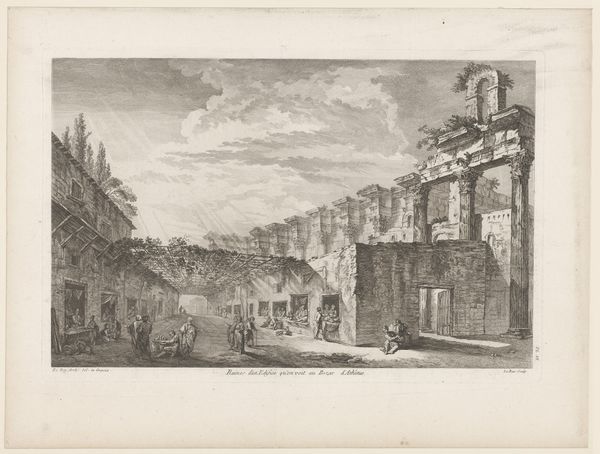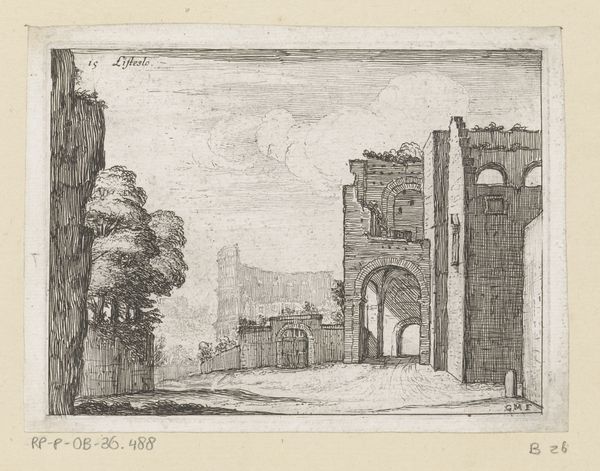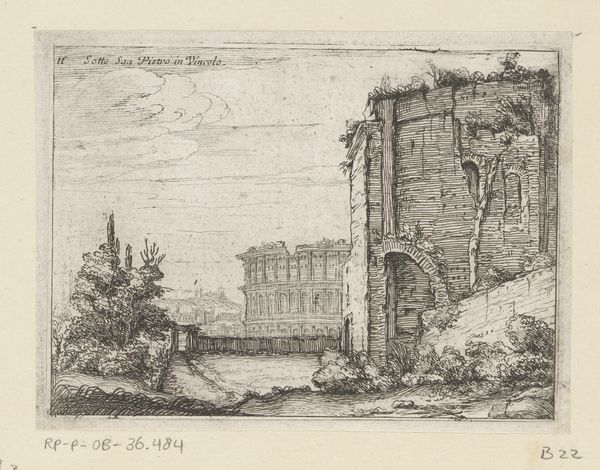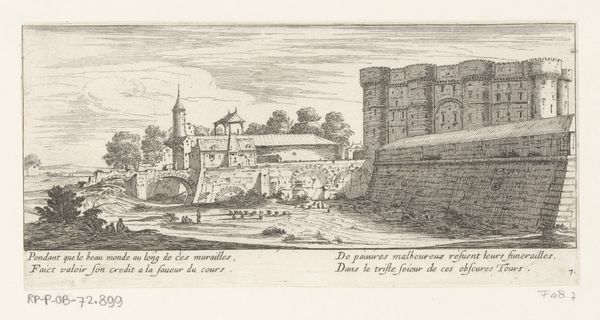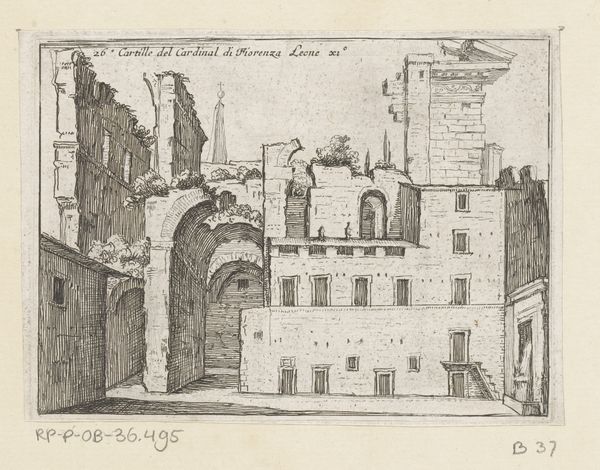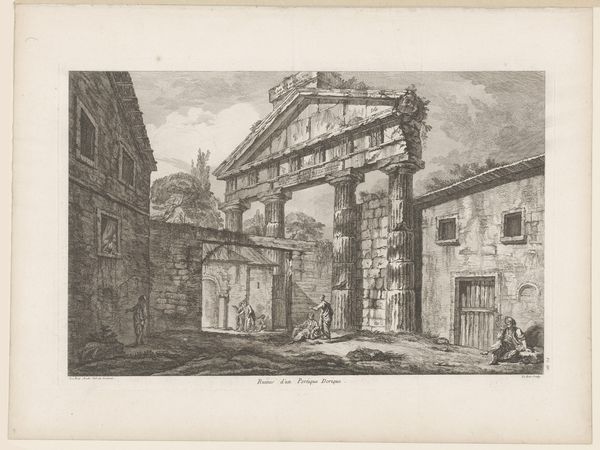
etching, engraving
#
etching
#
landscape
#
etching
#
cityscape
#
italian-renaissance
#
engraving
Dimensions: height 97 mm, width 130 mm
Copyright: Rijks Museum: Open Domain
Curator: This etching, titled "Ruins near San Stefano Rotondo in Rome," was created around 1629 by Giovanni Battista Mercati. It showcases a decaying cityscape rendered with impressive detail in line and form. Editor: It’s evocative! A palpable sense of decline, yet it manages to feel strangely serene. The way the figures in the foreground are almost swallowed by the ruins lends a somber mood to the composition. Curator: Precisely. Consider how Mercati uses etching to depict the gradual deterioration of architectural structures. The medium, using metal and acid, allowed for these very fine, precise lines to convey textures—stone, vegetation, crumbling brickwork—reflecting an engagement with decay and perhaps with a market of collectors interested in Romantic themes. Editor: That’s interesting to note the social context of this piece—what sort of patronage or cultural value system supports such works, and to consider how perceptions of time, mortality and historical change might play into this... it certainly speaks to the complex relationships Renaissance artists had with antiquity. Curator: Exactly! Roman ruins were incredibly popular among artists and served as sites for archaeological investigations. I think we need to contextualize Mercati's vision as actively documenting cultural heritage undergoing change from that time to ours today, reflecting not just what's seen but what happens around, through time. Editor: I agree, the artist invites us to consider what kind of labour led to the making of these city ruins that frame such human existence. These structural remains now stand as an ever-changing process—built up by human endeavor but constantly weathered down, reclaimed by both man and nature. Curator: Indeed. Mercati offers us more than just an aesthetic image. He's providing us a document which reveals elements about production and socio-political elements. Editor: It reminds us that what endures through material objects are never neutral and this artwork has offered an enduring commentary through artistic license.
Comments
No comments
Be the first to comment and join the conversation on the ultimate creative platform.
